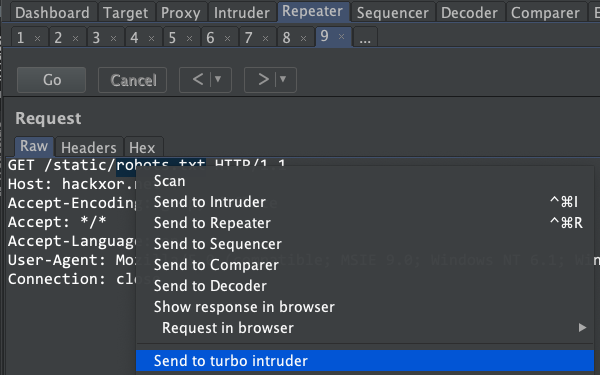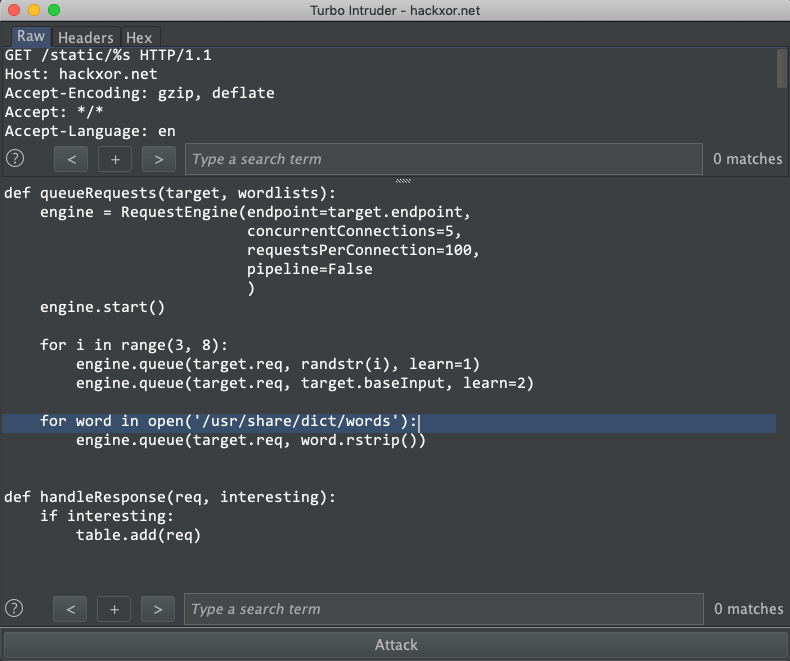Turbo Intruder is a Burp Suite extension which is an integrated platform for performing security testing of web applications. It sends many HTTP requests and then analyzes the output results.
It is emphasized as a Burp Intruder because of the phenominal quality of high speed, duration, and complexity.
The following features set it apart:
Fast – Turbo Intruder uses HTTP stack hand-coded from scratch with speed in mind. As a result, on many targets it can seriously outpace even fashionable asynchronous Go scripts.
Scalable – Turbo Intruder can achieve flat memory usage, enabling reliable multi-day attacks. It can also be run in headless environments via the command line.
Flexible – Attacks are configured using Python. This enables handling of complex requirements such as signed requests and multi-step attack sequences. Also, the custom HTTP stack means it can handle malformed requests that break other libraries.
Convenient – Boring results can be automatically filtered out by an advanced diffing algorithm adapted from Backslash Powered Scanner.
On the other hand it’s undeniably harder to use, and the network stack isn’t as reliable and battle-tested as core Burp’s.
How to use Turbo Intruder?
Install Turbo Intruder into Burp Suite using the BApp Store under the Extender tab.
Procedure:
Highlight the area you want to inject over, then right click ‘Send to Turbo Intruder’

You will see a window containing a Python snippet:

You’ll notice that the area of the request that you highlighted has been replaced with ‘%s’ – this is were your payloads will be placed.
To begin with you’ll probably just want to change ‘/usr/share/dict/words’ to a more suitable wordlist. Other than that the default script should work out of the box for simple use cases.
Command line usage:
From time to time, you might find you want to run Turbo Intruder from a server. To support headless use it can be launched directly from the jar, without Burp.
You’ll probably find it easiest to develop your script inside Burp as usual, then save and launch it on the server like so:
java -jar turbo.jar
Example: java -jar turbo.jar resources/examples/basic.py resources/examples/request.txt https://example.net:443 foo























